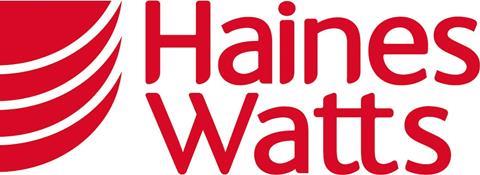Reviewing your current business plan is a critical first step.

The past few months have been nothing short of profound for the construction industry. With over 680,000 employees furloughed and nearly quadruple the number of SEISS claims than any other industry, the lockdown has had a far-reaching impact on businesses and projects all over the UK.
And yet, despite all of this, as we emerge from lockdown the outlook remains cautiously optimistic. But, with the end of the government’s financial support measures in sight, many of the owner-managers I am speaking to are asking: “What next?”
While nearly all sites are now back up and running, albeit with many at reduced capacity, it is essential to review your current business position, and begin to prepare for the months ahead – whatever they may bring.
Your stakeholders
First and foremost, you should be looking at your supply chain, clients, sources of funding and wider stakeholders. The peak of disruption is thankfully now over for most. But given that the majority of businesses will have been affected by coronavirus to some extent, you should be asking how secure your existing relationships are in the long term.
It is crucial to have open and honest conversations with your key stakeholders. Keep the dialogue flowing, and do not assume that just because we have seen the worst of it, suppliers, clients and funders are not facing their own challenges.
Your workforce
As the job retention scheme tapers off to a close – and with uncertainty still lying ahead – unfortunately it is likely that difficult decisions will have to be made about cutting jobs. The Construction Leadership Council has predicted that come September, there will be a 9.9% reduction in workforce industry-wide.
Up-to-date management information, cash flow forecasts and scenario planning can assist with decisions and help you identify potential cost savings
Having a strong grasp of your numbers will ensure you make decisions based on the facts. Up-to-date management information, cash flow forecasts and scenario planning can assist with decisions and help you identify potential cost savings.
On a separate note, it is also vital to prioritise your team’s welfare while they are on site. When I have spoken to construction clients, balancing output efficiency and social distancing has proven difficult. However, with flexible working hours and site diaries being moved onto digital platforms, it can be done – it just requires some forward planning around logistics.
Your cash flow
In April, output in the construction industry fell by 40% (equating to a staggering £5.1bn). Being in control of your business’s finances has never been more important. While you need to have your finger on the pulse of every aspect of your businesses, you also need to be aware of the practical things you can do to ease cash flow pressures.
- Cash flow forecasts – The reality is we do not know for certain what the next few months will hold. There could be a prospect of a second wave, and local lockdown measures might put your business in a vulnerable position. Developing a cash flow forecast gives you a huge advantage. Having a clear view of debtors and creditors, overheads, profits margins and loan repayments will inform better decision-making and enable you to plan ahead.
- Your structure – With income potentially fluctuating, now might be the time to revisit and reassess your business structure, to ensure you are operating in the most tax-efficient way. The structure of your business can have a significant impact on the amount of tax you pay, so those looking to the future should certainly take stock.
- Tax Incentives and reliefs – As state aid comes to an end, tax incentives and reliefs could offer your business an invaluable cash injection. Time after time, those in the construction industry remain unaware that they could qualify for different forms of tax relief. Research and development (R&D) tax relief, capital allowances and land remediation tax relief could unlock substantial amounts of cash from within your business. Many of the clients I work with have brought forward their year-end in order to access a percentage of the money in their R&D claims early. This has been a genuine lifeline for those struggling with cash flow.
Your VAT position
As projects get back under way, understanding your VAT position has never been more important. Ultimately, ignoring it could impact up to 20% of your budget. I have seen numerous construction companies swamped with unanticipated VAT costs, and in the worst-case scenarios, projects being aborted entirely, after having left VAT matters to the last minute.
As projects get back under way, understanding your VAT position has never been more important
Navigating your own way through the complex VAT rules and case law can be time-consuming and potentially costly if done incorrectly. I would recommend consulting a VAT specialist on the matter, given the potential risks involved.
Changes are coming …
Looking ahead to the long term, there are also compliance issues which I have been telling construction leaders to keep in mind while getting their businesses back up and running.
As you will no doubt be aware, HMRC’s proposed introduction of the domestic reverse charge has been delayed until March 2021. The new regulation is designed to tackle fraud in construction supply chains, meaning that both contractors and subcontractors will need to be clear on their obligations and ensure that they are fully compliant with the new rules. Right now, it may be a good time to start looking at everything from your sales, purchases and contracts, to see whether the reverse charge applies to them, and consider how the change might impact your cash flow. It is also worth checking that your accounting systems are up to speed and will be able to deal with the reverse charge.
Right now, it may be a good time to start looking at everything from your sales, purchases and contracts, to see whether the reverse charge applies to them
Another measure that has been delayed amid the pandemic is the upcoming changes to off-payroll working regulations (IR35), which have been pushed back to April 2021. Even though the rules do not come into play until next year, it is worth checking your off-payroll situation now, to make sure you do not get caught out at a later date. As a start, you should review all of your contracts with all contractors engaged through an intermediary, and make any necessary changes accordingly.
If you fail to meet HMRC’s requirements you could face severe penalties further down the line, and this is surely last thing you need.
The road ahead
Uncertain times are still to come, and the construction industry will undoubtedly face new challenges as it looks to reset and reinvent itself. Even so, from my experience the mood across the industry remains positive and confident.
Investing the time and effort to plan ahead now will place you in a more resilient position going forward. Looking to the years ahead, I am sure the industry as a whole will come out of this stronger.
How we can help
Haines Watts works with many of the UK’s privately owned construction, architecture and related businesses. We help owners evaluate their long-term goals, funding needs and associated tax planning opportunities.
To find out how we can help you position your construction business for recovery and long-term success, please get in touch.

Postscript
Jonathan Scott is a partner at Haines Watts.
He specialises in advising growing businesses and their high-net-worth owners. He works alongside owner-managers, offering commercially focused advice on a wide range of tax matters. His expertise covers everything from tax incentives and reliefs, to income tax planning, company reorganisations and inheritance tax.
Working with a wide variety of construction leaders over the years, Jonathan understands the unique set of challenges the industry faces. He helps business owners navigate this ever-evolving sector with advice that cuts through the noise and expertise that adds tangible value.
Whether it is supporting business growth or maximising a firm’s profitability, Jonathan provides construction companies with smart advice and innovative solutions to help them achieve their strategic goals.













No comments yet